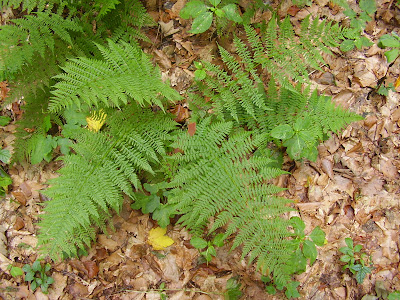Juniper, yew, spruce and other specimens with textbook shown below, for observation during a lesson. Photos taken at the Základní škola Lesní (an elementary school in Liberec, the Czech Republic).
Monday, October 10, 2011
Sunday, October 9, 2011
Field biology course for educators
A group of 27 biology teachers from Church schools recently attended a week-long course in field biology jointly organised by the University’s Department of Biology and the Curia’s Secretariat for Education at the University.The course was aimed at updating educators on methodology related to fieldwork organisation.It is widely recognised that the teaching of biology is most enriching and interesting for students when the learning process takes place ‘outside the classroom’ and in a ‘real world’ setting.The course consisted of lectures, fieldwork and laboratory sessions, with a focus on the Maltese environment. During the week, participants had the opportunity to put theoretical knowledge into practice through planning and preparation for fieldwork, surveying, sampling and data collection, and processing of the data collected.Topics covered during the course were related to shore and terrestrial ecology.During the shore ecology fieldwork, held on the Għallis coast, participants identified flora and fauna that inhabit rocky shores, and collected data on the abundance of selected fauna. During the terrestrial ecology fieldwork, held at Clapham Junction and Buskett, participants observed typical Mediterranean vegetation communities: garigue, steppe, maquis, and woodland.
The knowledge and applications learnt during the marine and terrestrial fieldwork sessions was synthesised during a site visit to Għajn Tuffieħa.A variety of habitats was explored there, ranging from banquettes of Posidonia oceanica wrack deposited on the sandy beach, to the terrestrial boulder scree that constitutes the typical Maltese rdum habitat.The lectures, field and laboratory sessions were led by Joseph Borg, Patrick Schembri and Sandro Lanfranco from the University’s Biology Department.
Originally published in The Sunday Times, 9.X.2011.
Wednesday, October 5, 2011
Ups and downs
Monday, October 3, 2011
Into the forests of Liberec
Along a stream, dewdrops on a delicate horsetail (Equisetum sp.) capture sunlight, scattering it into a miniature forest buzzing with insect life, amongst which is the common yet striking Pyrrhocoris apterus (Linnaeus, 1758). This heteropteran frequently shows aggregating behaviour and is found large populations, here photographed on the bark of the Czech national tree Tilia cordata Mill.
 | ||
| Equisetum sp., Liberec, Czech Republic |
 |
| Pyrrhocoris apterus (L., 1758) on Tilia cordata Mill. |
The periphery of the forest is characterized by a colourful scatter of berry clusters belonging to rowan (Sorbus aucuparia L.) and elder (Sambucus nigra L.), both of which have been traditionally used for food and medicine by settlers all over Europe. Further into the forest, as shade and shelter become predominant, ferns and mosses cover most of the clearing and make use of the abundant leaf litter.
 |
| Sorbus aucuparia L. |
 |
| Sambucus nigra L. |
 |
| Ferns on the forest floor |
Conifers of the area include pines (Pinus sylvestris L.) and spruce (Picea abies (L.) H.Karst), sometimes bearing evidence of food-seeking woodpeckers on their old trunks. Angiosperms such as beech (Fagus sylvatica L.) are also common, with their deceased offering an excellent resource for several fungal specimens.
 |
| seeds of Fagus sylvatica L. |
 |
| Fagus sylvatica L. compost |
 |
| fungus 1 |
 |
| fungus 2 |
 |
| clues left by woodpeckers |
Nymphalis antiopa (Linnaeus, 1758) and Vanessa atalanta (Linnaeus, 1758) are two beautiful and conspicuous butterflies found within the forest and elsewhere.
 |
| Nymphalis antiopa (L., 1758) |
 |
| Vanessa atalanta (L., 1758) |
Subscribe to:
Comments (Atom)











